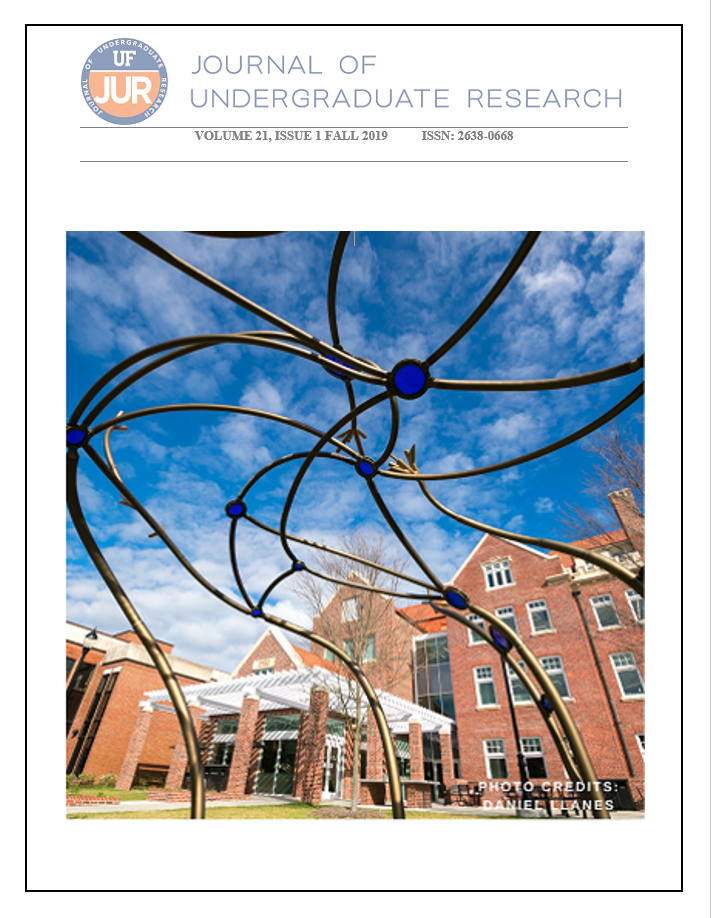Prevalence of intestinal parasites and related risk factors in rural localities from Pampa del Indio, Chaco, Argentina
DOI:
https://doi.org/10.32473/ufjur.v21i1.107939Keywords:
intestinal parasites, protozoa, helminth, ArgentinaAbstract
Intestinal parasites are a significant cause of morbidity in endemic areas in many low- and middle-income countries (LMICs). Infections with intestinal parasites have been reported in multiple locations throughout Argentina, but infection prevalence is still unknown in many areas. The aim of this study was to determine the prevalence of intestinal parasites in rural areas surrounding Pampa del Indio, Chaco, Argentina, and to identify risk factors for human infections. In the current study, a survey of three rural neighborhoods surrounding the town of Pampa del Indio was conducted in July 2018. A total of 24 households were surveyed. A questionnaire to assess socio-economic and household variables was administered and fecal samples were collected. Of the 62 stool samples analyzed, an intestinal parasite prevalence of 46.8% (29 cases) was found. The most common parasite identified was Endolimax nana (22.6%), followed by Giardia lamblia (17.7%), and Entamoeba coli (16.1%). Most of the intestinal parasites found were protozoa, but three cases of helminths (4.8%) were also identified. Participants were polyparasitized at a rate of 19.4%.
References
Daumerie, D., & Savioli, L. (2010). Working to overcome the global impact of neglected tropical diseases: first WHO report on neglected tropical diseases (Vol. 1). World Health Organization.
Dib, J., Oquilla, J., Lazarte, S. G., & Gonzalez, S. N. (2012). Parasitic prevalence in a suburban school of Famaillá, Tucumán, Argentina. ISRN microbiology, 2012.
Gamboa, M. I., Giambelluca, L. A., & Navone, G. T. (2014). Distribución espacial de las parasitosis intestinales en la ciudad de La Plata, Argentina.
Google (n.d.). [Pampa del Indio, Chaco, Argentina]. Retrieved January 8, 2019, from https://www.google.com/maps?safe=active&q=pampa+del+indio&um=1&ie=UTF-8&sa=X&ved=0ahUKEwjchKaNv7ngAhUJeawKHYnSCzsQ_AUIDigB
Hailegebriel, T. (2017). Prevalence of intestinal parasitic infections and associated risk factors among students at Dona Berber primary school, Bahir Dar, Ethiopia. BMC infectious diseases, 17(1), 362.
Haque, R. (2007). Human intestinal parasites. Journal of health, population, and nutrition, 25(4), 387.
INDEC. Censo Nacional de Población, Hogares y Viviendas 2010.
Krolewiecki, A. J., Ramanathan, R., Fink, V., McAuliffe, I., Cajal, S. P., Won, K., ... & Lee, R. (2010). Improved diagnosis of Strongyloides stercoralis using recombinant antigen-based serologies in a community-wide study in northern Argentina. Clin. Vaccine Immunol., 17(10), 1624-1630.
Liese, B., Rosenberg, M., & Schratz, A. (2010). Programmes, partnerships, and governance for elimination and control of neglected tropical diseases. The Lancet, 375(9708), 67-76.
Maldonado P. Atlas del Gran Chaco Americano. 1st ed. Buenos Aires: Agencia Alemana de Cooperación Técnica; 2006.
Matzkin, R., Galván, M., Miranda, O., Merino, D., & Balbachán, S. (2000). Parasitosis entéricas en una población escolar periurbana de Resistencia, Chaco. Comun. Cient. Tec, 40, 197-200.
Periago, M. V., García, R., Astudillo, O. G., Cabrera, M., & Abril, M. C. (2018). Prevalence of intestinal parasites and the absence of soil-transmitted helminths in Añatuya, Santiago del Estero, Argentina. Parasites & vectors, 11(1), 638.
Sah, R. B., Bhattarai, S., Yadav, S., Baral, R., Jha, N., & Pokharel, P. K. (2013). A study of prevalence of intestinal parasites and associated risk factors among the school children of Itahari, Eastern Region of Nepal. Tropical parasitology, 3(2), 140.
Sheather, A. L. (1923). The Detection of Intestinal Protozoa and Mange Parasites by a Floatation Technique. Journal of Pathology and Therapy, 36(pt. 4).
Telemann, W. (1908). Eine methode zur erleichterung der auffindung von parasiteneiern in den faeces. DMW-Deutsche Medizinische Wochenschrift, 34(35), 1510-1511.
Torgerson, P. R., Devleesschauwer, B., Praet, N., Speybroeck, N., Willingham, A. L., Kasuga, F., ... & Gargouri, N. (2015). World Health Organization estimates of the global and regional disease burden of 11 foodborne parasitic diseases, 2010: a data synthesis. PLoS medicine, 12(12), e1001920.
Willis, H. H. (1921). A simple levitation method for the detection of hookworm ova. Medical Journal of Australia, 2(18).
Zonta, M. L., Oyhenart, E. E., & Navone, G. T. (2010). Nutritional status, body composition, and intestinal parasitism among the Mbyá‐Guaraní communities of Misiones, Argentina. American Journal of Human Biology: The Official Journal of the Human Biology Association, 22(2), 193-200.
Downloads
Published
Issue
Section
License
Some journals stipulate that submitted articles cannot be under consideration for publication or published in another journal. The student-author and mentor have the option of determining which journal the paper will be submitted to first. UF JUR accepts papers that have been published in other journals or might be published in the future. It is the responsibility of the student-author and mentor to determine whether another journal will accept a paper that has been published in UF JUR.

